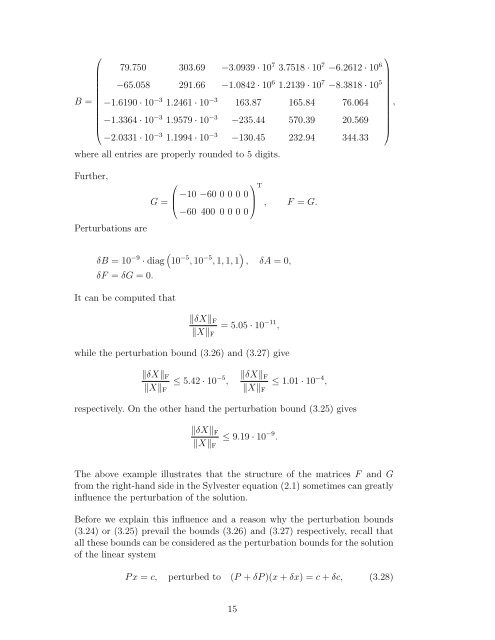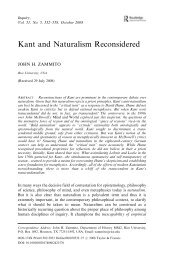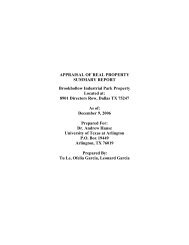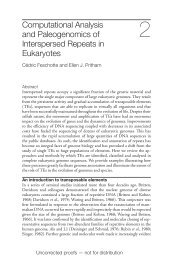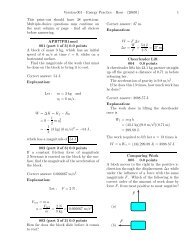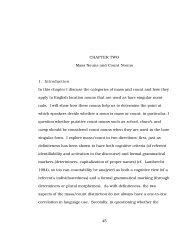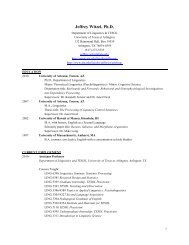Low Rank ADI Solution of Sylvester Equation via Exact Shifts
Low Rank ADI Solution of Sylvester Equation via Exact Shifts
Low Rank ADI Solution of Sylvester Equation via Exact Shifts
You also want an ePaper? Increase the reach of your titles
YUMPU automatically turns print PDFs into web optimized ePapers that Google loves.
⎛⎞79.750 303.69 −3.0939 · 10 7 3.7518 · 10 7 −6.2612 · 10 6−65.058 291.66 −1.0842 · 10 6 1.2139 · 10 7 −8.3818 · 10 5B =−1.6190 · 10 −3 1.2461 · 10 −3 163.87 165.84 76.064,⎜ −1.3364 · 10 −3 1.9579 · 10 −3 −235.44 570.39 20.569⎟⎝⎠−2.0331 · 10 −3 1.1994 · 10 −3 −130.45 232.94 344.33where all entries are properly rounded to 5 digits.Further,Perturbations are⎛⎞⎜ −10 −60 0 0 0 0 ⎟G = ⎝ ⎠−60 400 0 0 0 0T, F = G.δB = 10 −9 · diag ( 10 −5 , 10 −5 , 1, 1, 1 ) , δA = 0,δF = δG = 0.It can be computed that‖δX‖ F‖X‖ F= 5.05 · 10 −11 ,while the perturbation bound (3.26) and (3.27) give‖δX‖ F‖X‖ F≤ 5.42 · 10 −5 ,‖δX‖ F‖X‖ F≤ 1.01 · 10 −4 ,respectively. On the other hand the perturbation bound (3.25) gives‖δX‖ F‖X‖ F≤ 9.19 · 10 −9 .The above example illustrates that the structure <strong>of</strong> the matrices F and Gfrom the right-hand side in the <strong>Sylvester</strong> equation (2.1) sometimes can greatlyinfluence the perturbation <strong>of</strong> the solution.Before we explain this influence and a reason why the perturbation bounds(3.24) or (3.25) prevail the bounds (3.26) and (3.27) respectively, recall thatall these bounds can be considered as the perturbation bounds for the solution<strong>of</strong> the linear systemP x = c, perturbed to (P + δP )(x + δx) = c + δc, (3.28)15


